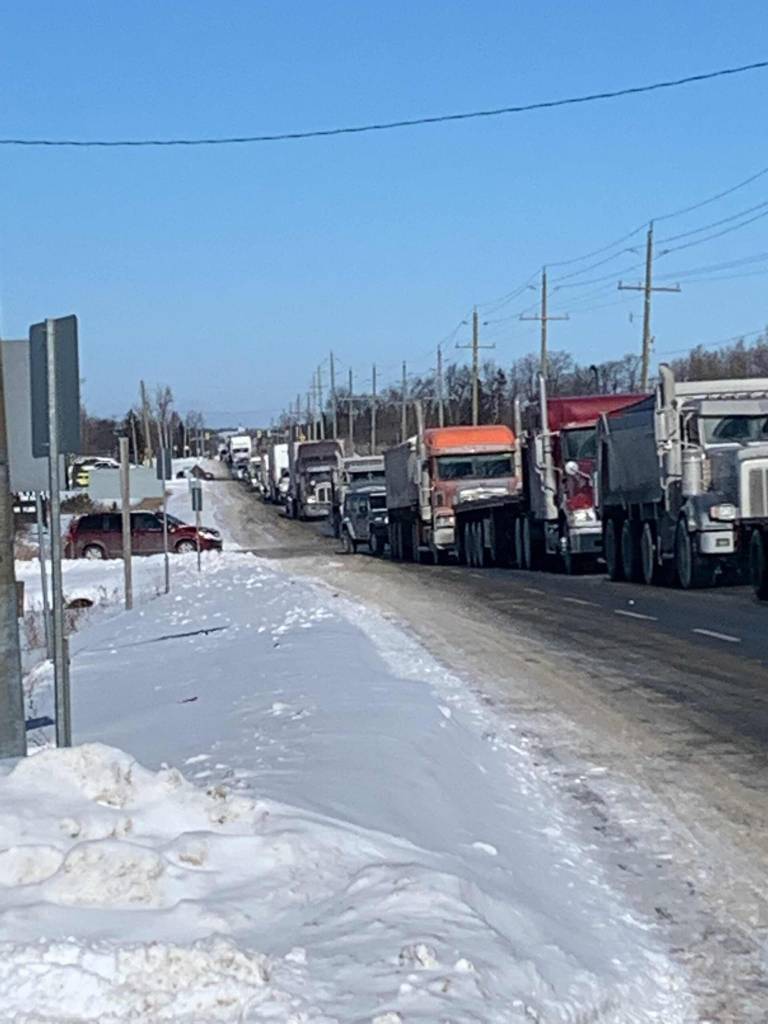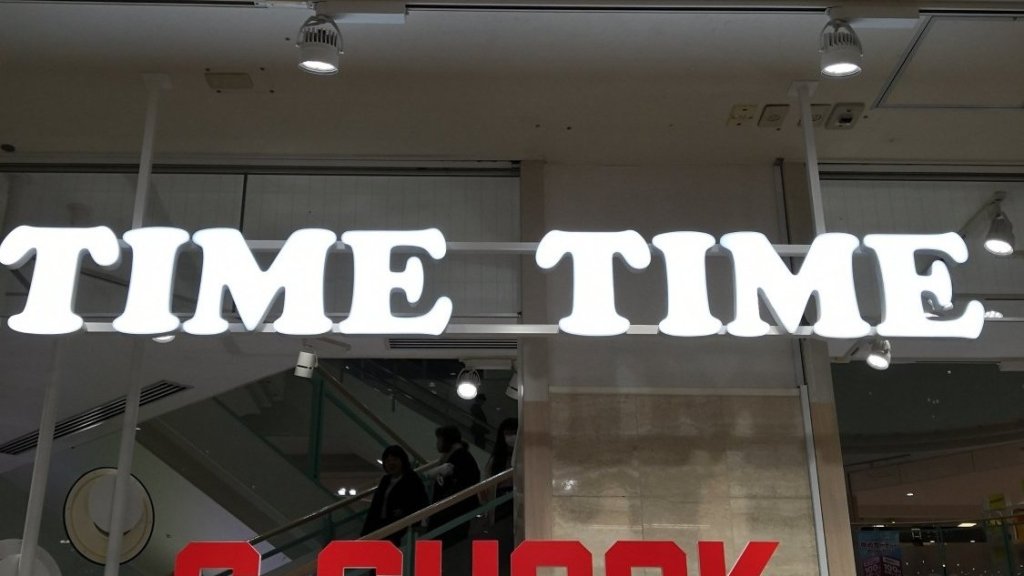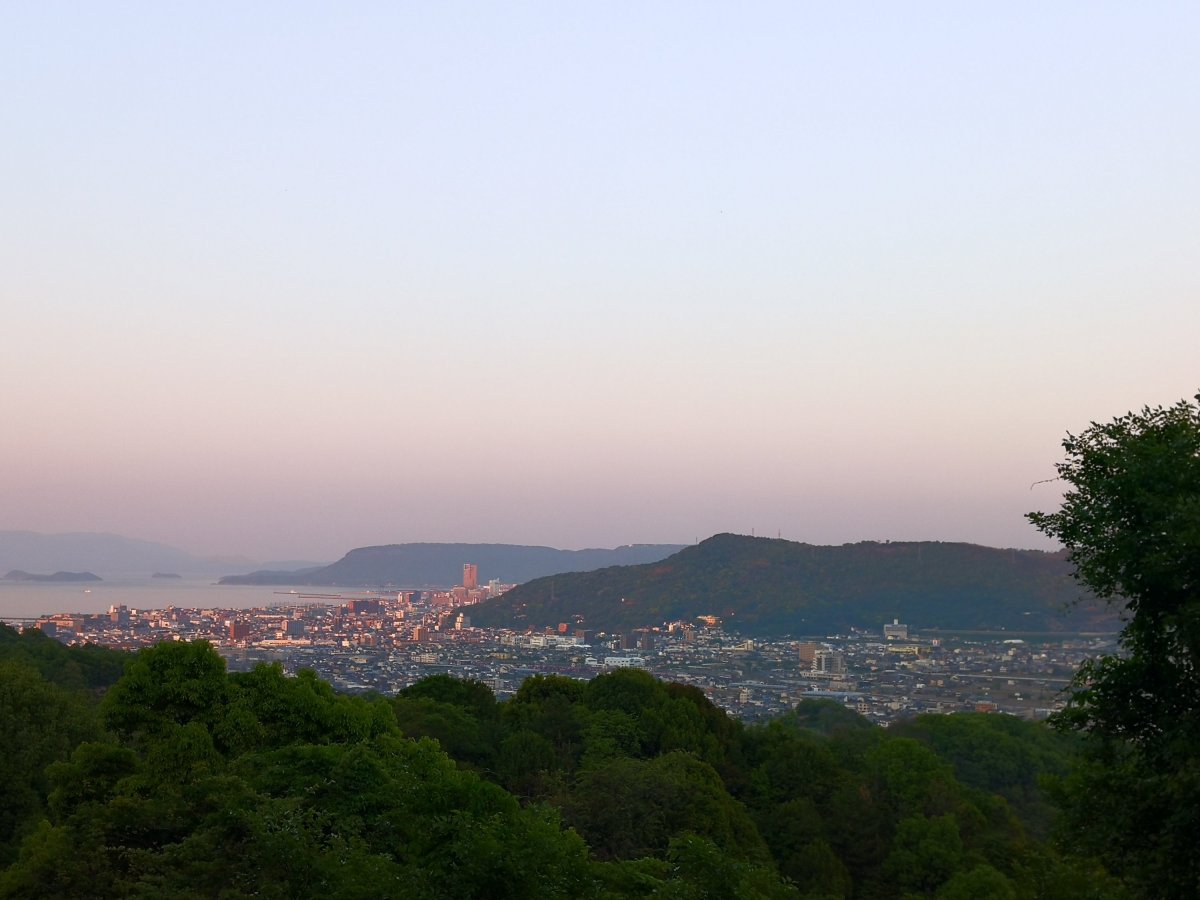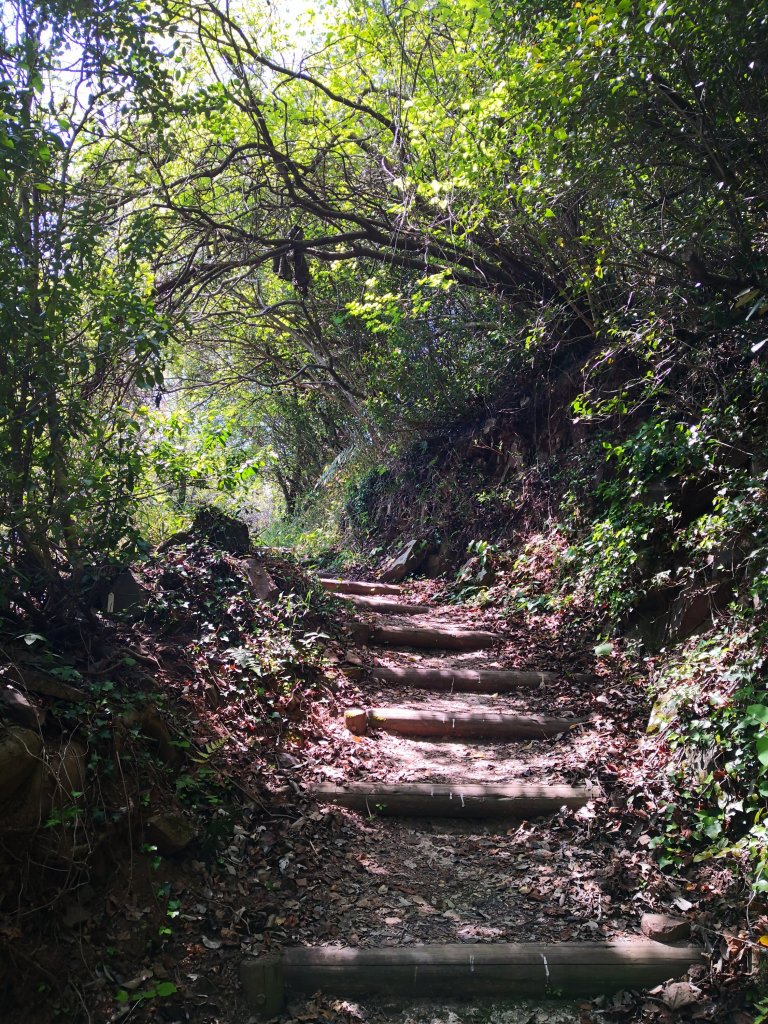I’ve finally arrived back home. It feels strange to be back. Everything is the same but oddly different. There’s an ominous tension in the air that wasn’t there before. I feel like I’ve stepped into some kind of mental institution.
I’ve been wondering why I’ve felt this way, and I’m confident it’s because of the rules and restrictions surrounding COVID. They were – and are – baffling. I can’t find any logic behind most of them, and none of these things were necessary in Japan. And then I looked at the narrative of the media in Canada, and it started making sense. The propaganda here is incredibly strong. I didn’t expect that this would ever happen in this country. I watched a video of Trudeau stating, “we will get out of this pandemic by vaccination,” and I thought, ‘wow. That didn’t age well.’ And then I realized that clip was from only a few days prior. What? Is it not common knowledge that the vaccinated are still spreading the disease? I thought we’d known this for over a year now. The vaccinated can contract the virus. They can transmit the virus. And they have the same viral load as the unvaccinated. How is it even conceivable that the vaccine could stop anything? Especially in the face of Omicron.
But the thing about propaganda is that it’s like an illusion. If you’re standing where intended, you’re under the spell. For me, not being in Canada for all that time meant I was not standing in that intended spot. I’m a fresh frog who’s been tossed into a Canada-sized pot of boiling water, while the other frogs haven’t taken notice of the drastic change in temperature. And what I was witnessing was unbelievable.
And there’s an explanation as to why: Astroturfing, censorship, and the merger of state, media and tech. Astroturfing is a relatively new method that the establishment uses to carefully construct a narrative designed to manipulate people’s opinions. This is when political, corporate and special interests disguise themselves to publish comments, reviews, ads, and articles to elevate their own agenda, and smear or “debunk” anyone who disagrees with them. Their goal is to convince people that there’s widespread support for, or against, an agenda when there isn’t. It’s a type of artificial reality they construct around you. Sometimes Astroturfers intentionally shove out so much confusing and conflicting information as to make it nigh impossible to tell what’s true. A few easy identifiers for astroturfing include when the terms crank, quack, nutty, lies, paranoid, pseudo, and conspiracy are used. They claim to “debunk” myths that aren’t myths at all. In our current climate, they repetitively use the term “anti-vaxxer.” Seeing any of these terms should be a red flag to think twice about what’s being presented. I highly recommend watching this video for more information. In it, Sharyl Attkisson states that these methods are “now more important to [special] interests than the traditional lobbying of congress. There’s an entire industry built around it in Washington.” And this was in 2015.
Next, let’s look at the Trusted News Initiative. The Trusted News Initiative (TNI) began in 2019 when the BBC brought together Big Tech and other large media companies including Facebook/Instagram, Google/Youtube, Twitter, Microsoft, Reuters, CBC/Radio-Canada, European Broadcasting Union (EBU), the Washington Post, just to name a few. People were losing trust in established mainstream news sources (after realizing they were being lied to repeatedly), and the TNI wanted to bring corporations together and rectify the situation globally. The original goal of the TNI was to stop “disinformation which threatens human life or disrupts democracy during elections.” On the surface, this doesn’t necessarily seem nefarious, but there are major conflicts of interest at play here. Government tax money (ie. YOUR money) is given to Big Pharma, which spends a massive amount advertising with TNI corporations, who, as it so happens, also have investments in Big Pharma, and some of that money eventually makes it back to select politicians. Even before the pandemic, they had reported that anti-vaxxers were gaining traction on social media as part of a “fake news” movement that was spreading “misleading and dangerous information”. Then, after the pandemic began, that turned into stopping so-called “disinformation” about the vaccine. They went on to disseminate massive amounts of pro-vaccine messages, while demonizing the unvaccinated to force compliance.
TNI corporations cleverly pretend to be giving you the news – the truth – but in actuality it’s essentially just a disguised advertisement – that isn’t actually concerned about the truth at all. Its purpose is to promote specific narratives and to silence any dissenting voices – by censoring, demeaning, de-platforming, delegitimizing, and de-licensing them. They became even more heavy handed in their approach when they decided that stopping so-called “disinformation” about the vaccine would include censoring any content that promoted “vaccine hesitancy.” And what might that mean? Anything that would make one hesitant to take the vaccine – any information, no matter how factual, was and is, to be quashed, silenced, “debunked,” de-legitimized, etc. What about adverse events? Not allowed to talk about them. People across social media have been demonized for even bringing up their experiences. At best, adverse events will be played down – the severity underreported, and language twisted to highlight positives and sweep negatives under the rug (as seen with myocarditis, when a number of publications tried to claim that it was mild and temporary – when this affects children, and young males in particular, at an alarming rate, can permanently damage the heart muscle, and is hospitalizing over 80% of those that have this adverse reaction (additional related video here)). This is a huge problem. How are people supposed to make informed decisions if they are being fed such heavily biased information? In Canada, by law, a healthcare professional is required to inform patients of the risks and benefits of each treatment option as well as the probabilities of success and failure. This is called informed consent, and it is actively being blocked by the TNI in regards to the vaccine.
The TNI also pays for “fact checkers” to run false fact checks and hit pieces on doctors, scientists and journalists who contradict the official narrative. Fact checkers may sound authoritative, but they often only have a bachelor’s degree, and can sometimes just be an intern with a high school diploma. Let that sink in for a moment. These people are fact checking doctors and scientists. And I have seen a number of doctors and scientists frustrated that fact checkers didn’t understand the literature on what they were “fact checking.” Two good examples are this article by Heather Heying, and Part III of this post by Joomi Kim. When Facebook was sued over their fact checks by John Stossel, they admitted in court that the fact checks were merely opinions (and therefore immune from defamation). And yet these opinions are presented in a misleading way, so that they are thought of as fact – why else call them fact checkers? Not only that, they argued that they should be able to do so because of freedom of speech. Imagine that. They get to curate and infringe upon the freedom of speech of others, and that should be protected by freedom of speech. Do I really need to point out that freedom of speech, by nature, isn’t supposed to be one-sided?
Remember when prominent biologists and doctors hypothesized that COVID-19 may have come from a lab? I do. I also remember when those people were smeared across the state/corporate press and Big Tech platforms for it. Now this is accepted as the most plausible explanation for the origin of SARS-CoV-2. This exemplifies how no one is not allowed to think or discuss ideas outside of the carefully constructed narrative. Only when something is brought into the fold of the narrative by Big Tech and the state/corporate news entities is it an acceptable topic. And when, or if, they do reluctantly bring something like this into the fold, it’s usually months or years behind the doctors and scientists who have been fighting to get the message out, or at the very least, just have a discussion. This isn’t news. It’s a façade. It’s global information control. They’ve stopped scientific discussion and debate. Doctors, who spend their time literally saving lives, are not and have not been permitted to even discuss the best way forward on how to continue to save lives. How can they possibly practice the most effective way to do so under such circumstances? The answer is obvious: They can’t. The TNI is forcing us to shoot ourselves in the foot. With a cannon. During a global pandemic.
Also in 2019, $600 million of taxpayer money was given by the Trudeau government to select Canadian news outlets. Select outlets, meaning whoever was in the position to choose the outlets had the power to pick the ones that would do exactly what they wanted. And the Trudeau Liberals were in that position. Instead of being able to choose which media companies to support, Canadians were forced to bail out media of the government’s choosing. And during this pandemic we’ve seen certain Canadian publications in lockstep with the narrative, doing the exact same thing as the TNI. They are easy enough to spot, if you keep an eye out for them.
One additional thing I’d like to point out is how many logical fallacies are used to prop up the validity of the constructed narrative. Just as Dr. John Campbell points out in his Ivermectin debunking video, people are taking the word of reporters and politicians rather than listening to doctors presenting data. This is an appeal to (false) authority. The media has been rife with pushing logical fallacies such as this. Appeals to authority, appeals to emotion, ad hominem attacks, false equivalencies, red herrings, poisoning the well, sweeping generalizations, post hoc ergo proctor hoc, are just some of the first that come to mind. It is important to keep these in mind when considering the validity of an argument. This is especially so with everything going on right now.
From studying propaganda in university, there is one rule that has always stuck in my mind: Everything in this world is neither good nor evil, but public opinion makes it so. That is to say, no matter what good or evil you wish to accomplish, warping public opinion makes it possible. You can convince them evil is good, or vice versa, through propaganda. You just need to nudge them psychologically until they’re standing in the right spot.
Now let’s get back to being in Canada. Everything back home looks pretty much the same, but at the same time, this place is unrecognizable. The values that Canadians held fundamentally dear to them have begun to dissolve, and sadly, for many, they have dissolved.
The Canadian “leaders” have circumvented parliament to enact policies and regulations that break multiple parts of our Canadian Charter of Rights and Freedoms, effectively acting like some kind of dictatorship. Not only did they skirt the democratic process, but they also did not follow any of the other stringent rules set in place for overriding any part of the Charter. For example, no cost-benefit analysis was done for anything put in place at all. Our freedom of movement; freedom of conscience; freedom of assembly; freedom of association; freedom of thought, belief, opinion and expression; right to life, liberty and security of person (including our freedom of bodily autonomy and right to informed consent) have all eroded or have been discarded completely. This is illegal. What our government has done, and is doing, is illegal. And yet the media is in lockstep with the government on this. It’s insane. But luckily for Canadians, there may still be hope. The last surviving first minister to help write the Charter of Rights and Freedoms in 1982 is suing the federal government because of this. Our rights as Canadian citizens are not being upheld. They are being trampled upon by our so-called “leaders,” who are not being held accountable for any of their actions. Here is a video with Brian Peckford explaining his lawsuit and the situation in general. Every Canadian should watch that video. If our rights continue to erode, before we know it, we won’t have any. We will be subject to the whims of whoever is in power, no matter their wish. The Charter expresses our fundamental values – the values our country is based on. Human rights. And they are undemocratically being abandoned.
This is not the Canada that I once knew. I used to be proud to be Canadian. Life here now is a spinning circus. Democracy in this country has been revoked, in favor of a dictatorial regime. Scientific data, as well as our values, have been discarded for the whims of our “leaders.” And the media has convinced Canadians this is in their own best interest, when it could not be more the opposite. Is there truly no hope for our future?
Enter the truckers:










Perhaps I wasn’t the only frog noticing the hot water.
After Joe Biden and Justin Trudeau agreed to mandate all truckers be vaccinated to cross the border, the truckers responded, “no.” They decided to drive to Ottawa in protest of our current government’s overreach. They state, “To our Fellow Canadians, the time for political overreach is over. Our current government is implementing rules and mandates that are destroying the foundation of our businesses, industries and livelihoods.” From the very beginning they have emphasized that this was a peaceful protest, and their rules for the protest include not entering any government building or property under any circumstances, treating all police officers with respect, keeping calm and not getting baited into conflict, and not making any type of threats.
Their Facebook group has been quickly growing since its inception. It’s over 760 000 users at the time of writing*. Not only that, the Gofundme has raised over $7 million. It’s difficult to pin down the actual number of truckers involved. Corporate media is downplaying the numbers, stating a few hundred or low thousands, while Trudeau has called them a “fringe minority.” The actual number is probably somewhere in the tens of thousands, with some in the group saying upwards of 50 000. There are American truckers joining in too, planning to cross the border to join their Canadian brothers and sisters in Ottawa. And let’s not forget all of the Canadians that are supporting the convoy, that have been greeting them from the side of the road, or from overpasses. Here’s a video with some highlights of the trip, and here’s another good one taken in Toronto. It is clearly far, far from a “fringe minority.” Nothing has unified Canadians like the Freedom Convoy has, at least in recent history, and most certainly not for the past two years. In fact, I can’t seem to remember a time where people seemed to be this united. I don’t think there has been an event in my lifetime as significant. It marks a chance for all Canadians to come together and voice their concerns, which have, for the past two years, been quashed into near silence. It’s the chance for Canadians of all walks of life to come together and stand up for their rights and freedoms.
Predictably, the state/corporate news is smearing them however they can. CityNews even reported that they were protesting unsafe road conditions, before facing a backlash from the public and having to edit the (written) story to specify that this was a separate protest from the gigantic one involving tens of thousands of truckers that they just so happened to miss. Then, when finally deciding to cover the actual story, they decided to broadcast that there would be “death and destruction” and likened it to the January 6th United States Capitol riot. They then went on to accuse the Gofundme of money laundering. There are also plenty of state/corporate news outlets have claimed these are anti-vaccination protests, which is misleading. The vaccine is not the focal point of the protest – it’s the policies and regulations that have diminished the freedoms of Canadians that are the focal point. Framing the story in such a way is dishonest, and it mischaracterizes the movement. The CBC said there were protestors with confederate flags, and suggested that they were Nazis, but only moments later claimed that Russia may be instigating the protest. Maybe they’re Russian Nazis who want to restore the Confederacy? The story (which is quite comical) can be found here – and this video is also a great example of the TNI in action – reaffirming the narrative while pushing the vaccine. The conspiracy theories surrounding this protest put forward by the state/corporate media have been astounding. Any of this sound like an attempt to de-legitimize to you? Any of it sound like flooding people with tons of confusing and contradictory stories? Given what I discussed earlier, none of this should be surprising – but somehow it still shocks me. It’s uncanny to watch them try to create their own parallel, separate reality in real time. If you watch any footage of the convoy at all, the message is clear: Freedom for all Canadians. Restoration of the Charter of Rights and Freedoms. (This was a great livestream showing a bit of the first day in Ottawa.) I wish the truckers and everyone in Ottawa the best, and I hope this helps more and more people come to their senses and unite for our rights.

In conclusion, I’d like to be clear: my message is not no vaccination. It is that the policies, restrictions and regulations and the way they are enforced are far more harmful than the thing they claim to be protecting us from. It is that the corporate media and Big Tech companies have pretended to inform people while propagating and perpetuating madness instead. They have driven a wedge between the people of this country, isolated them, and battered them with disinformation. They have manipulated Canadians into blaming each other instead of blaming those responsible. The common scapegoat used everywhere is obvious: it’s the fault of the unvaccinated. Trudeau even stated that, “they don’t believe in science, they’re often misogynist, often racist.” Scapegoating such a diverse group of people with this inflammatory language is not only divisive and hateful; it’s dangerous. A leader shouldn’t be directing a nation’s anxiety, anger, fear and frustrations towards a particular population of its people. One needs only look back at the history of the 20th century to see why. Not only that, but those in positions of power who are making these policies aren’t even following them. As Thomas Sowell said, “it’s hard to imagine a more stupid or more dangerous way of making decisions than by putting those decisions in the hands of people who pay no price for being wrong.” The “news” media, politicians, as well as anyone else involved in this insanity need to be held accountable. In a court of law where applicable. And they should never be allowed in a position of power over anything ever again.
*the Facebook group has been deleted multiple times since I wrote this section. Videos of the convoy have been removed. This movement has been heavily censored by Facebook (and Instagram).








































